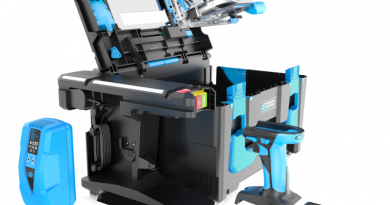Battery-Powered Oscilloscopes
AC line power using a standard power cord is not always available in places you want to take measurements with a digital storage oscilloscope; however, a battery-powered oscilloscope will enable you to operate without requiring AC line power. Take note of the following safety precautions in order to safely operate a battery-powered oscilloscope.
When your oscilloscope is being powered by a battery, the instrument’s display will show a warning informing you that 1) the oscilloscope is operating from the internal battery pack, and 2) that you must connect a ground wire between the ground terminal on the rear panel and earth ground when operating from battery power to prevent electric, which can result in serious injury and even death.
This warning pertains to circuits with voltages greater than thirty volts root-mean-square — if the circuit under test has voltages exceeding thirty root-mean-square, the chassis must be connected to earth ground with the provided grounding wire included with the oscilloscope to avoid electrical shock. You will not be protected from electrical shock if you connect the oscilloscope to a hazardous voltage if you fail to attach the grounding wire.
So long as you follow environmental specification limits while operating your oscilloscope with a battery, it is all right to float the signal common for taking measurements if you do not connect a signal greater than thirty volts root-mean-square from earth ground to the common lead or probe tip. Yet again, when taking measurements in which voltages exceed thirty volts root-mean-square, the instrument chassis must be connected to earth ground with the grounding wire.
Remember that the signal commons for all oscilloscope channels will have the same potential, i.e. they are not independent, so be sure that all probe common leads are properly connected to the same voltage/common point. Never connect a grounded device — e.g., a computer or printer — to the oscilloscope without connecting the grounding wire to earth ground. If you need to perform to differential measurements with independent signal grounds, you will need to use differential oscilloscope probes.
